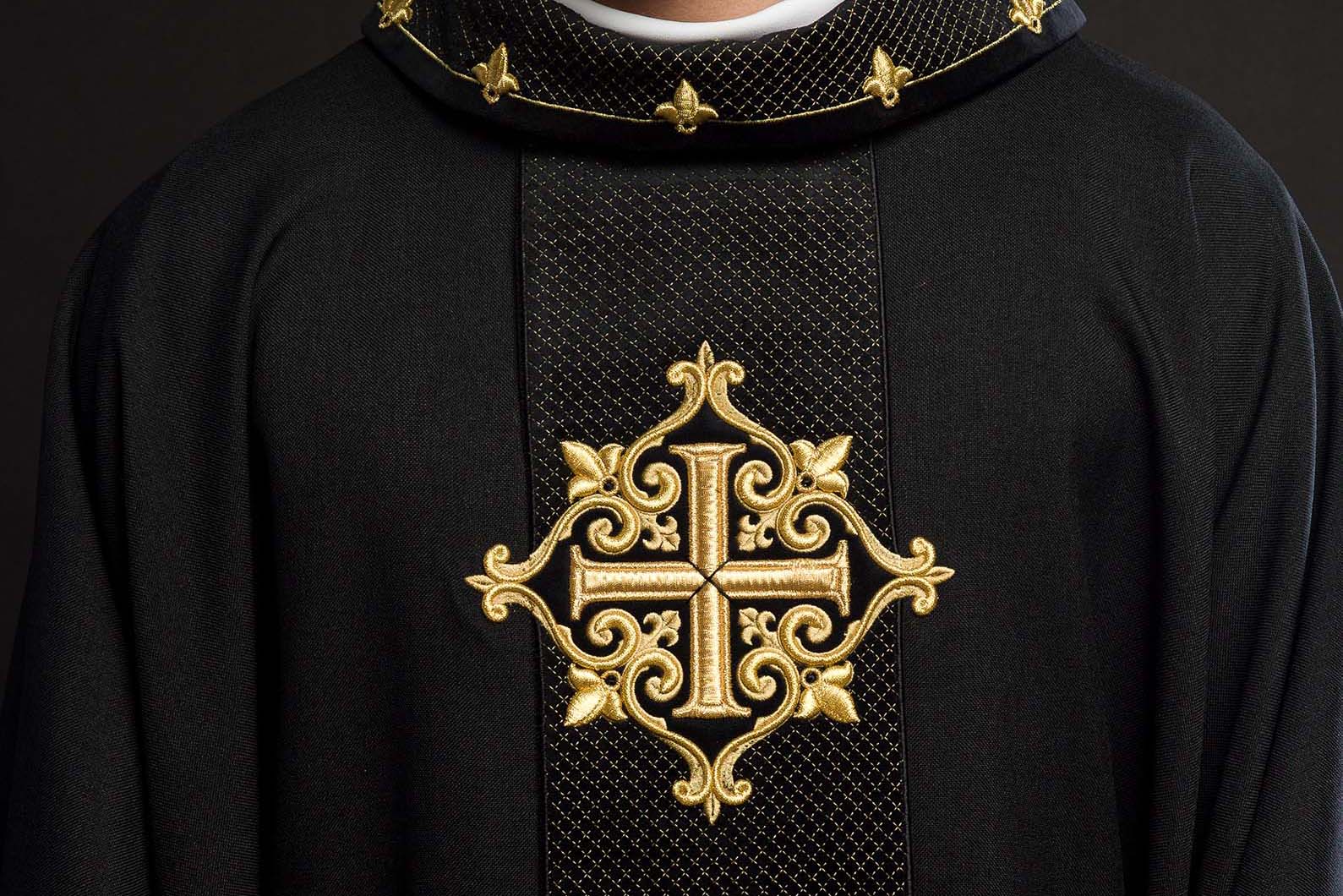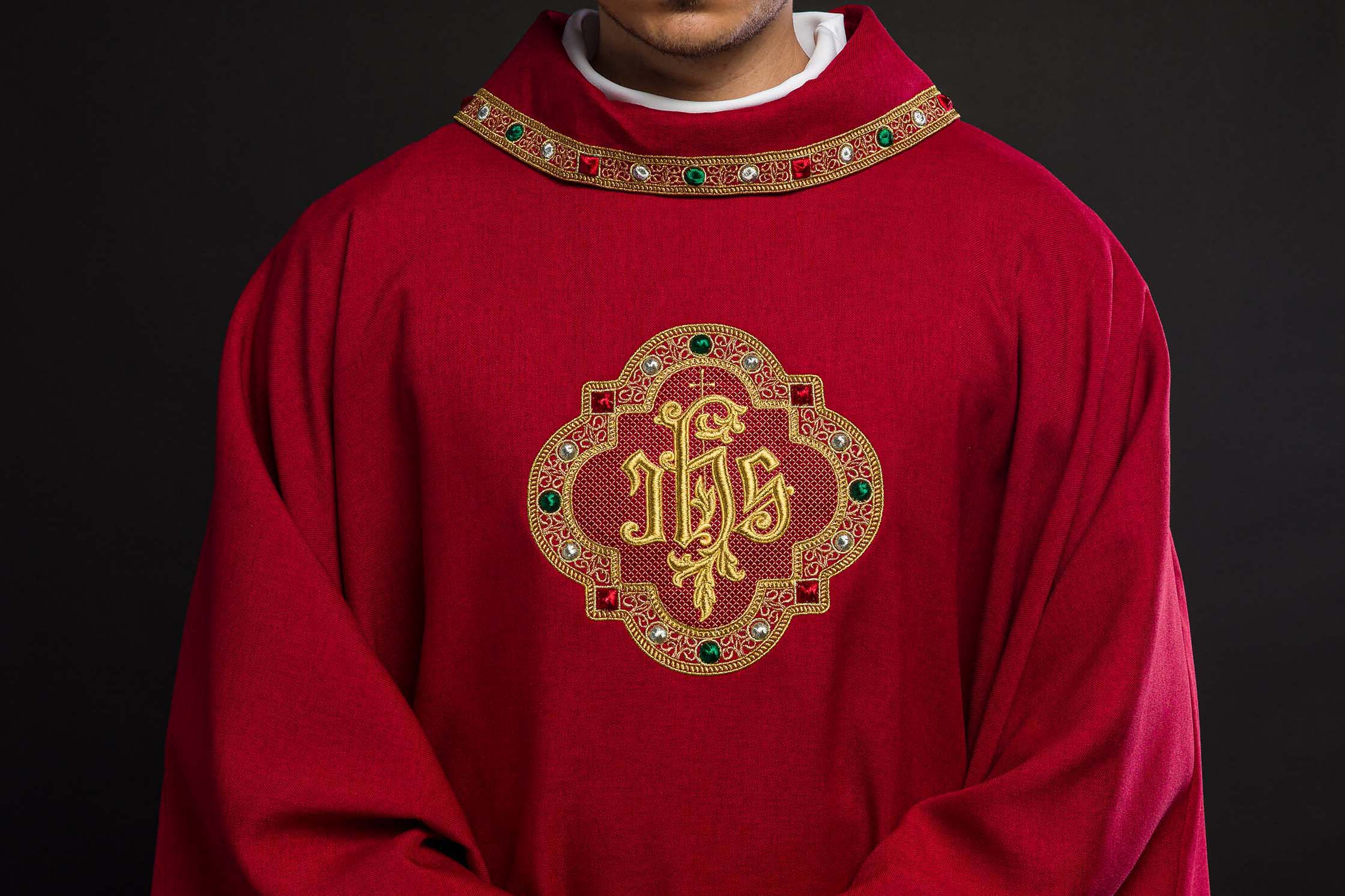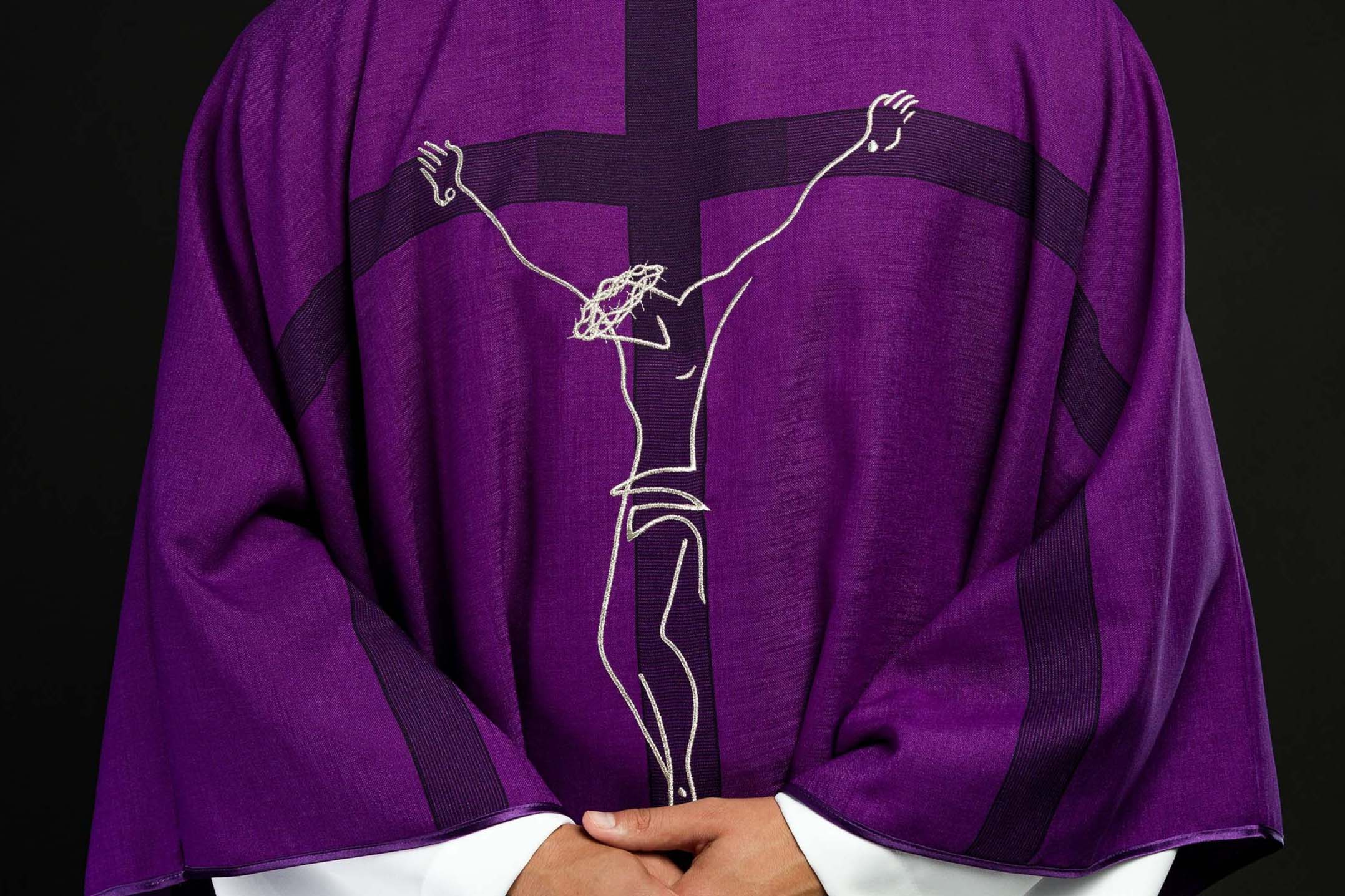
Liturgical Colors: A Complete List and Their Profound Meaning in the Church
Liturgical Colors - A Complete List and Their Meaning
Liturgical colors play an extremely important role in the Catholic Church, serving not only as an aesthetic element but primarily as a carrier of deep symbolism. Each color is closely related to a specific period of the liturgical year, holidays, or commemorated saints. Understanding the meaning of the colors of liturgical vestments allows for a fuller experience of the Holy Mass and other services, as well as a deeper understanding of the mysteries of faith. In this article, we will take a closer look at the complete list of liturgical colors and their symbolic message.
What are liturgical colors and why are they important?
Liturgical colors are a traditional set of colors used to prepare priestly vestments and other liturgical elements, such as banners, veils, or altar cloths. Their systematic use is rooted in the centuries-old tradition of the Church and has been regulated by liturgical instructions. The main purpose of using colors is to emphasize the character of particular periods and days of the church year, as well as to reflect the essence of the liturgy being celebrated and the mysteries of faith.
These colors are not accidental. Their symbolism often draws from the Holy Scripture, apostolic tradition, and the meanings attributed to colors in culture and history. The choice of the appropriate color of vestments by the priest is an expression of respect for the mystery of God and an appropriate liturgical accent that helps the faithful in focus and prayer.
Basic liturgical colors and their symbolism
The Catholic Church uses several basic colors, each carrying a distinct meaning:
White – the color of joy, purity, and victory
The color white is a symbol of purity, innocence, joy, light, and glory. It is the color reserved for periods of penance and sorrow. It is associated with the presence of God, the resurrection of Christ, as well as the adoration of angels and saints. In the liturgy, the color white is used during:
- The Christmas season (from Christmas Eve Mass to the Feast of the Baptism of the Lord).
- The Easter season (from the Easter Vigil to Pentecost Sunday).
- Liturgies commemorating Jesus Christ (except for the Passion of the Lord).
- Memorials of Mary, angels, saints who are not martyrs, and All Saints' Day.
- Baptismal, confirmation, marriage, ordination, and funeral liturgies.
White also symbolizes purity, immaculate virginity, and adoration.
Red – the color of blood, martyrdom, and the Holy Spirit
The color red refers to the blood shed by martyrs for the faith, as well as the flames of the Holy Spirit. It symbolizes love, sacrifice, and zeal. Red is used in the following cases:
- On Palm Sunday (Passion Sunday).
- On Good Friday (in memory of the Passion of the Lord).
- On Pentecost Sunday.
- On the memorials of the apostles and evangelists (unless their martyrdom is commemorated), as well as martyrs.
Red is the color of life, but also of the fire of God's love, which transforms.
Green – the color of hope and life in Christ
The color green symbolizes hope, perseverance, peace, and eternal life. It is the color of ordinary time, which is the longest part of the liturgical year. The green vestment is a symbol of spiritual growth, hope for salvation, and life in Christ. It is used:
- During the ordinary time of the liturgical year, outside of days commemorating specific events or historical figures.
Green is associated with nature, rebirth, and the continuity of life, which perfectly reflects the meaning of Christian hope.
Purple – the color of penance, conversion, and expectation
The color purple is traditionally the color of penance, conversion, reflection, and expectation. It is particularly important during Advent and Lent. Purple signifies repentance, as well as readiness to receive God's grace. It is used:
- In Advent (a time of joyful anticipation of the birth of Christ).
- In Lent (a time of reflection and preparation for Easter).
- In funeral liturgies.
- On the memorials of martyrs.
Purple also symbolizes dignity and solemnity, and encourages deep introspection.
Pink – the color of joy in the season of penance
The color pink is a transitional color, combining the penitential character of purple with the joy of the approaching feast. It is a color expressing joy, but in the context of the still ongoing period of penance.
- It is usually used on the Third Sunday of Advent (Gaudete Sunday – "Rejoice") and on the Fourth Sunday of Lent (Laetare Sunday – "Be Glad").
Pink is a symbol of gentleness, joy, and light that begins to penetrate the darkness of penance.
Black – the color of mourning and dying
The color black traditionally symbolizes mourning, death, and darkness. In liturgical practice, it is used less and less frequently, and its function on days of mourning and funerals is often taken over by the color purple. However, if it is used, it is primarily:
- In funeral liturgies.
- On the anniversary of Christ's death (e.g., Good Friday, although red is more often used here).
The color black reminds us of transience, human mortality, but also of the darkness of sin from which we want to free ourselves.
Less typical liturgical colors and their use
In addition to the basic colors, other colors may appear in the liturgy of the Church, although their use is more varied and often depends on local customs or special blessings:
- Gold: It is a solemn and festive color. It often replaces white, red, green, or purple in particularly important celebrations, emphasizing their rank. However, it is not an independent liturgical color in the traditional sense.
- Blue: Although not officially recognized as a liturgical color in the Code of Canon Law, it is often used in Marian liturgies or in some regions as an alternative to the color white or purple, referring to the purity and heavenly character of Mary.
- Silver: Like gold, it is not a separate liturgical color. It can be used as an ornament for vestments, replacing embroidery in white or gold.
How to choose liturgical vestment colors in practice?
The choice of liturgical vestment color is strictly determined by the liturgical calendar and the texts of a given Mass or service. The priest or person responsible for preparing the liturgy must follow the official guidelines of the Church to ensure compliance with regulations and uniformity of the rites performed.
For the faithful, understanding the meaning of liturgical colors is an important element of deepening faith and participation in the mysteries of the Church. It allows them to see the depth of the message that each day and each period of the liturgical year carries.
In the offer of HAFTINA TEXTILE GROUP SP. Z O. O. you will find a rich selection of liturgical vestments made of the highest quality materials, in accordance with traditional guidelines regarding colors and symbolism. We offer both classic chasubles and stylish stoles or albs, which will help in the spiritual experience of every liturgy. We encourage you to familiarize yourself with our offer, where each liturgical color is a reflection of the beauty and depth of faith.
When is white used?
White is used in the Church during times of joy, purity, and glory. This includes the Christmas and Easter seasons, as well as feasts and memorials in honor of Jesus Christ (except for His Passion), saints who are not martyrs, angels, and funeral liturgies. It is a symbol of resurrection and eternal life.
What is the meaning of the color red in the liturgy?
The color red symbolizes blood and fire. It is used in the liturgy in memory of the Passion of the Lord (Good Friday, Palm Sunday), as well as on the feasts of the apostles, evangelists, and martyrs. It represents love, sacrifice, and the Holy Spirit.
When is green used?
Green is the color of ordinary time, which symbolizes hope, perseverance, and life. It is used for most of the year, outside of special periods when other colors apply. It is a color symbolizing spiritual growth and faith in God's promises.
What does the color purple mean in the liturgy?
Purple is the color of penance, sorrow, conversion, and expectation. It is used during Advent and Lent, as well as in funeral liturgies. It is a color symbolizing repentance and preparation for important events.
Are there other liturgical colors besides the main ones?
Although officially six liturgical colors are distinguished (white, red, green, purple, pink, black), in practice you can also find colors such as gold or blue. Gold is a solemn color, often replacing other colors in important holidays. Blue, although informal, is sometimes used in Marian liturgies.
For what celebrations is pink used?
Pink is used in the Church twice a year – on the Third Sunday of Advent (Gaudete Sunday) and on the Fourth Sunday of Lent (Laetare Sunday). It is a color symbolizing joy and hope in periods of penance, indicating the approaching great holidays.
When can black be used in the liturgy?
Black, traditionally associated with mourning and death, is less commonly used in the liturgy today. Its role on days of mourning and at funerals is often taken over by the color purple. However, if it is used, it is mainly during funeral Masses.
How do liturgical colors affect the reception of the Holy Mass?
Liturgical colors have a significant impact on the reception of the Holy Mass, helping the faithful to focus spiritually and understand the nature of a given liturgy. Each color carries a specific message that harmonizes with the mysteries of faith celebrated on a given day or period, creating a coherent visual and symbolic whole.
Does the choice of vestment color depend on the material?
The choice of liturgical vestment color does not depend on the material, but on the liturgical calendar and church regulations. The material (e.g., silk, linen, polyester) affects the appearance and durability of the vestment, but does not determine its color. Any permitted color can be made of various fabrics, while maintaining its symbolic value.
What are the recommendations for embroidery on liturgical vestments in different colors?
The embroidery on liturgical vestments should be matched to the color and character of the vestment. For example, white and gold embroidery goes perfectly with white vestments, emphasizing their solemn character. Darker colors, such as purple or red, can be decorated with gold or silver threads, adding depth and elegance. The motifs of the embroidery often refer to the symbolism of a given liturgical period or holiday.
```




